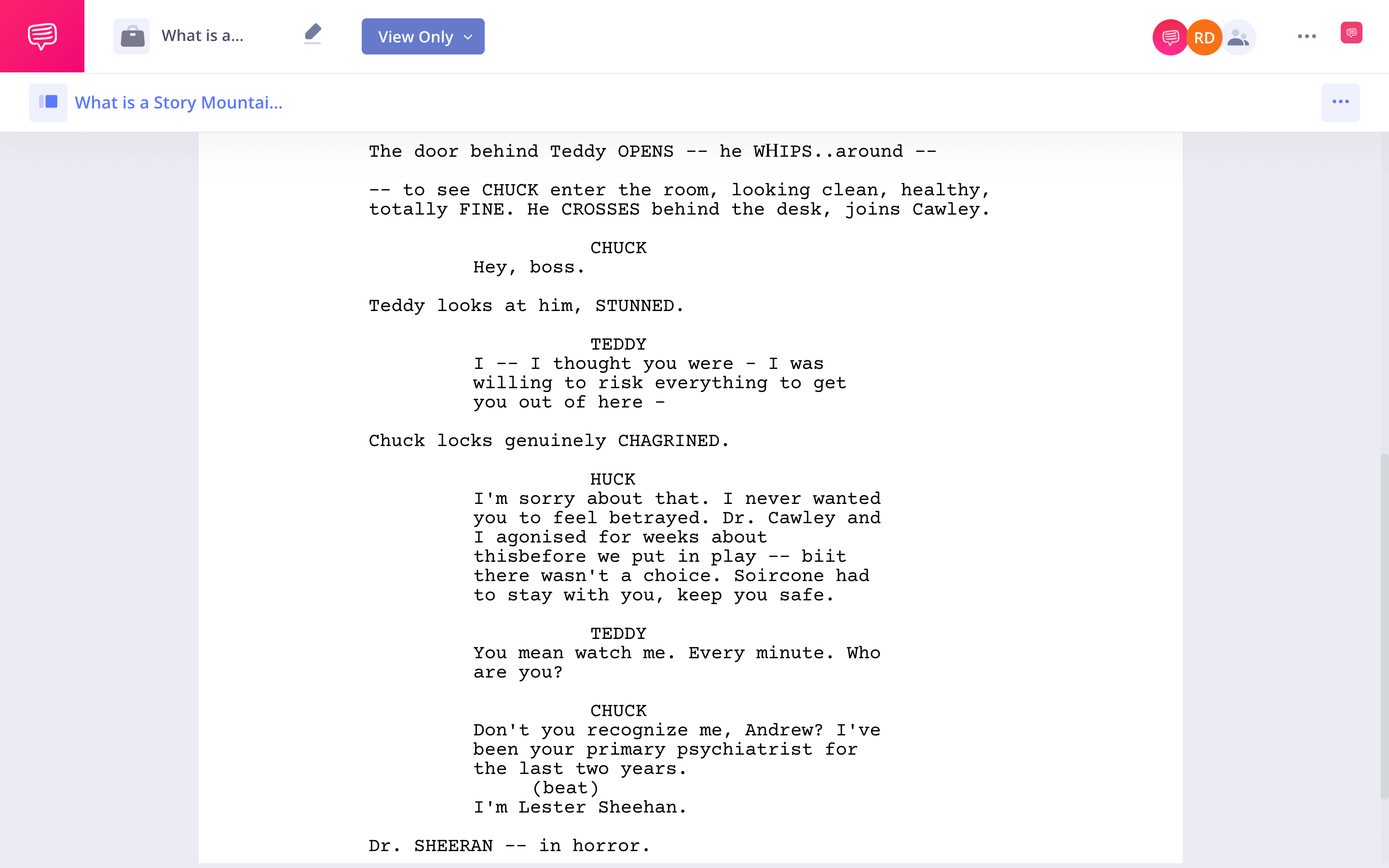What does every story have in common? They all have a beginning, middle, and end. Obviously, writing and storytelling is more complex than simply laying out a beginning, middle and end. But simplifying those plot structures into clear stages can help with brainstorming and organizing your ideas as a writer. This visual guide of plot points is usually called a story mountain.
What is a Story Mountain template?
First, let’s define a Story Mountain
So what is a story mountain? Narratives about hiking? Not quite. Let’s nail down a definition for the term, before looking at some story mountain templates.
STORY MOUNTAIN DEFINITION
What is a Story Mountain?
A Story Mountain or story map helps visualize and understand the series of incidents in a plot. Represented visually as a mountain, these stories build to a climax or obstacle that needs to be overcome, before being resolved and ‘ending’ on the other side of the mountain.
Story Mountain Structure:
- Exposition
- Conflict/Rising Action
- Climax
- Falling Action
- Resolution
As you can see, a story mountain is inextricably linked to plot. A plot is the organized pattern or sequence of events that make up a story. Every plot is made up of a series of incidents that are related to one another.
All those events can be illustrated in a story mountain. Here’s a story mountain template:

Story mountain template
Let’s take a closer look into each plot point, and see them more clearly with clips and examples from some of your favorite TV shows and movies. Learning about these different components of what makes up a plot will help you in crafting more compelling narratives.
Plot Mountain Example
Exposition in a Plot Mountain
Exposition usually occurs at the beginning of a story and is when the characters are introduced, and we usually learn about the setting of a story. Thus, most of it is located in the “background” section of a story mountain.
There are many different techniques filmmakers use to show exposition. The 5 main ones are:
Dialogue
Dialogue between two or more characters allows for simple and effective exposition in a single scene.
Narration
Narration, or voice over, is a way to communicate a character’s true thoughts and desires, or give insight into what’s happening.
Mise-en-scène
Mise-en-scène is the arrangement of scenery and stage properties in a play. Translated from French, it means "setting the stage" but, in film analysis, the term mise en scene refers to everything in front of the camera, including the set design, lighting, and actors. Mise en scene in film is the overall effect of how it all comes together for the audience.
Mise en scene elements include:
Sets
Costumes
Actor blocking
Text or title cards
This is the most straightforward technique. Text or title cards can contain all the relevant information your audience will need to know, before the film even begins. What movies that use this technique come to mind? Here’s one particularly famous example:
Star Wars opening titles
Flashback
There are multiple ways to show past events in a present narrative, but flashbacks are the most visual as they place your character in context (versus having the characters or narrator relate the event, also known as showing vs telling).
What famous movies or TV shows can you think of that use flashbacks to tell the character’s story? Lost is one of the most acclaimed shows to rely on flashbacks for plot development.
Let’s look at the best movie example of exposition. The Up opening montage is deemed by film critics to be a masterclass in narrative exposition. The film opens with a series of images that guide us through main character Carl Fredriksen’s relationship with his wife. In the span of just a few dialogue-free minutes, we experience Carl and Ellie’s joy, love, and loss over the many years. It’s devastating and memorable. Check it out below:
Up exposition opening montage
If you can still read through your tears, let’s continue to our next plot points.
Plot Mountain Example
Conflict and Rising Action
In a story mountain template, conflict spurs rising action. A conflict and rising action are introduced and the protagonist’s journey begins. There is usually an inciting incident and rising action that takes place. A plot mountain literalizes “rising action”– the line rises to its peak.
Take a look at Little Red Riding Hood as a plot mountain example:

Story mountain example
In this story mountain example, the rising action is when Little Red Riding Hood meets the wolf– conflict is established.
One movie conflict and rising action that comes to mind is the scene from Finding Nemo where Marlin witnesses a scuba diver kidnap his son, Nemo. This moment of conflict set the stage for the rest of the story where Marlin painstakingly searches for Nemo.
Here’s a 2 minute summary of Finding Nemo that narrates all the major plot points:
Finding Nemo plot explained
The story mountain is usually done as a basic diagram, but is useful in the early stages of writing to best organize your characters and motives.
Plot Story Mountain
Plot Mountain Climax
Climax is the term used to refer to the part of a story where the tension or action reaches its highest point. This follows the rising action and precedes the falling action. In story mountain examples, this is, as you might imagine, the peak.
You can probably think of some pretty great movie or TV show climaxes. Perhaps one of the most shocking in recent films is that of Shutter Island. At the climax, DiCaprio's character is revealed in a bait and switch twist to be the true villain of the story - and his entire character is a charade.
Check out the reveal in Laeta Kalogridis’ screenplay, which we imported into StudioBinder’s screenwriting software:
Shutter Islan Climax Scene
It’s a masterful scene, where Teddy, along with the audience, slowly sees the entire story unravel. This reveal starts with Chuck’s entrance, and Kalogridis emphasizes this by putting his name in all caps and underlining it.
Now, watch the scene below to see how it was translated onto the screen.
Shutter Island Climax Scene
Falling Action
Story Mountain Falling Action
The falling action of a story is the section of the plot that follows the climax. It’s the backside of the mountain.
The falling action decreases tension of the central conflict, moving the story forward toward its conclusion. Characters use falling action to settle into whatever has changed in the climax, and to slowly work their way to resolving internal and external conflicts.
The falling action helps resolve the problem in the climax and the resolution completes the story. Let’s use Titanic as an example. In the film, the falling action is when Jack and Rose escape the sinking ship and find a floating door from the interior of the sinking ship, which helped them float together. There is still drama in the falling action, as Jack dies before the resolution, in which Rose is rescued.
If you’re interested in learning about a more complex narrative structure, read about the Story Circle. Hollywood writer Dan Harmon describes his 8 step story structure of a protagonist's journey, sort of similar to a story mountain, but with more detail. Check it out a video explanation below:
What is a Story Circle? • Subscribe on YouTube
No matter what shape you use, visualizing your story can help you make sense of how your plot is functioning.
Up Next
What is the Three Act Structure?
There are other forms of plot structure, like the Three Act Structure. This article goes into more about this narrative model that screenwriters use as an organizational tool to help build stories.

